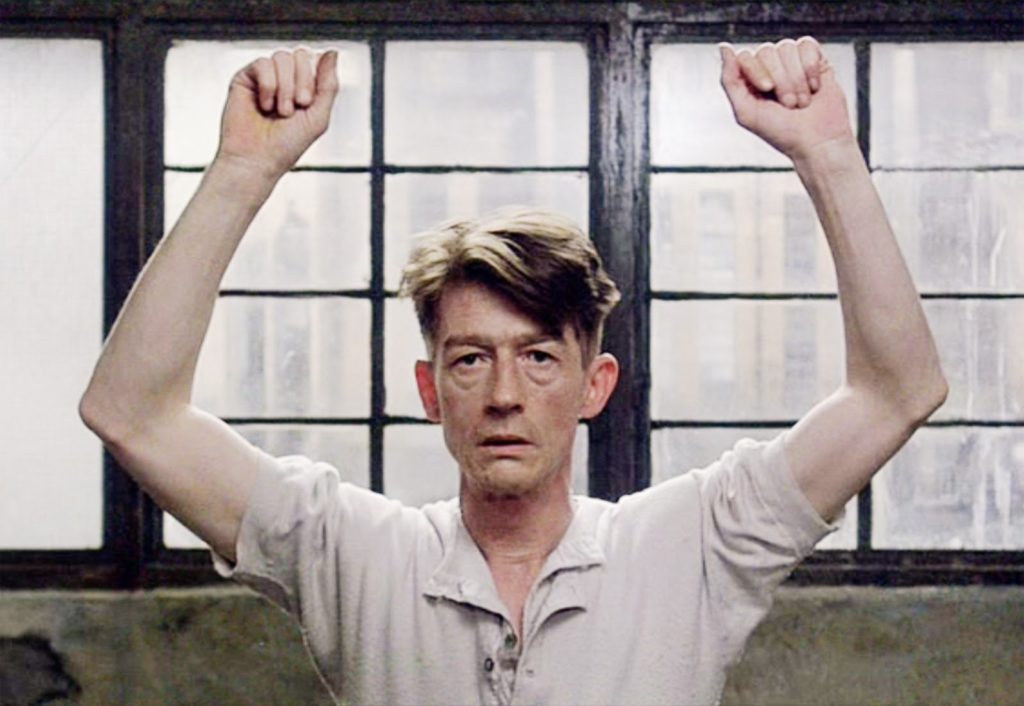On April 4th, 11 theaters in Massachusetts will screen the film adaptation of George Orwell’s dystopian work, 1984*. The organizers of this event, the United State of Cinema, write, “This date was chosen because it’s the day George Orwell’s protagonist Winston Smith begins rebelling against his oppressive government by keeping a forbidden diary. These theaters’ owners also strongly believe in supporting the National Endowment for the Arts and see any attempt to scuttle that program as an attack on free speech and creative expression through entertainment.”
This is no ordinary screening. It is an indication of the times we live in.

For those who have yet to read Orwell’s work (a number which continues to shrink with the growing sale of his book), the story follows the aforementioned Winston in his discovery of a world built upon fake news and a totalitarian regime. The symbol of an ever-watching Big Brother pervades the story as the eyes and ears of a state which quells thoughts of rebellion and controls the liberating ideas behind thought and free will.
The idea of DoubleThink is introduced early in the story as the act of accepting a belief contrary to the truth. Prior to the current political landscape, this idea was difficult to conceptualize. Now, as we move further into a presidency shrouded with uncertainty, Trump’s supporters come to seem all the more illustrative of this act.
These are the essential parts of 1984, a story which tries less to create a fully realized narrative than it creates a striking commentary upon the role of government in everyday life. Again, the basis of this 1949 novel once seemed difficult to grasp in a world where technology was not developed enough to provide full pictures of civilian surveillance. Yet, as we look backward at Orwell’s work, the picture gets scarier.

For this reason, director Michael Radford felt that the story should be revisited and sought out the rights to get the picture made. It was through his efforts (and the financing of Richard Branson) that 1984 was realized as a motion picture with a release in the year it shares a name with.
The film feels fresh by modern standards due to its full commitment to aesthetic choice. Technology feels dated in this universe, with a strange sepia tone placed over every device we’d assume is advanced or futuristic. This is thanks to Radford’s decision to produce his future within the folds of a 1940s art style – a choice which brilliantly captures the world Orwell writes within while at the same time enforcing the fascist subtext of the work.
The legendary John Hurt brings life to Winston in ways that might surprise readers of the book. For the first time since experiencing this story, you may feel a deepened sense of pathos for his portrayal as the character transcends his original bystander role to feel more like a force for change in the narrative.
All of this being said, Radford’s 1984 is one of the few examples of a stunning adaptation. It forces readers to revisit the original narrative through a new, more precise lens while at the same time going further into the darkness of this not-too-alien future.

I do not have to tell you why 1984 has risen to a new level of relevance. What I do have to tell you is that, by seeing this film, you are supporting a movement amongst artists to draw up a reflection of the world we live in. You are, in essence, providing your support for the growing grey we find ourselves encompassed within.
* – Additionally, the Brattle Theatre will be screening it Sunday, 4/9. –ed.
1984
1984
dir. Michael Radford
110 min.
Tuesday, 4/4, 7:00PM @Coolidge Corner
Sunday, 4/9, 7:00PM @Brattle (double feature w/ Fahrenheit 451)
35mm!

